Novel Wilkinson Power Divider with an Isolation Resistor on a Defected Ground Structure with Improved Isolation
Abstract
:1. Introduction
2. Design Equations
2.1. Even and Odd Mode Analysis without DGS Elements
2.2. Parameters Extraction of DGS Section
3. Proposed Theory and Design Flow
4. Design and Measurement
- (1)
- Draw the proposed WPD circuit and label its essential parameters.
- (2)
- Apply circuit analysis and conjugate matching theory to extract the required parameters.
- (3)
- Utilize Microsoft Excel or MATLAB to compose a spreadsheet program or script, in order to calculate the unknown parameters, i.e., , and isolation resistance R.
- (4)
- Perform circuit simulation and three-dimensional field analysis using ANSYS Electronics Desktop.
- (5)
- Insert the DGS section into the ground plane utilizing the physical dimensions a, b and g, which are acquired by following the procedure illustrated in Figure 6b, and perform EM simulation.
- (6)
- If the achieved results are desirable, then fabricate the proposed circuit to check the validity of the circuit.
- (1)
- Guess the dimensions of the DGS section (trial-and-error method) by taking an approximation from its calculated lumped elements i.e., capacitance and inductance given in Equations (19) and (20).
- (2)
- Select dielectric material and thickness.
- (3)
- 3D simulate the DGS section separately by taking the TL2 line and fabricate the DGS section below the TL2 transmission line.
- (4)
- Perform full-wave analysis and extract the S-parameters versus frequency, as shown in Figure 8.
- (5)
- Change the dimensions of the DGS iteratively, until the frequency response meets the required acceptable result.
- (6)
- Take the dimensions, i.e., a, b, and g, if the simulated circuit exhibits the required preferable S-parameters, i.e., at the attenuation pole location is less than −20 dB.
5. Conclusions
Author Contributions
Funding
Institutional Review Board Statement
Informed Consent Statement
Data Availability Statement
Conflicts of Interest
References
- Wilkinson, E.J. An N-way hybrid power divider. IRE Trans. Microw. Theory Tech. 1960, 8, 116–118. [Google Scholar] [CrossRef]
- Pozar, D.M. Microwave Engineering, 3rd ed.; Wiley: New York, NY, USA, 2005. [Google Scholar]
- Lim, J.S.; Park, J.S.; Lee, Y.T.; Ahn, D.; Nam, S. Application of defected ground structure in reducing the size of amplifiers. IEEE Microw. Wirel. Comp. Lett. 2002, 12, 261–263. [Google Scholar]
- Sung, Y.J.; Ahn, C.A.; Kim, Y.S. Size reduction and harmonic suppression of rat-race hybrid coupler using defected ground structure. IEEE Microw. Wirel. Comp. Lett. 2004, 14, 7–9. [Google Scholar] [CrossRef]
- Woo, D.J.; Lee, T.-K. Suppression of harmonics in Wilkinson power divider using dual-band rejection by asymmetric DGS. IEEE Trans. Microw. Theory Tech. 2005, 53, 2139–2144. [Google Scholar]
- Tao, F.; Jun, X.; Yan, W.M. Design of 1:3 unequal Wilkinson power divider with defected ground structure. In Proceedings of the 2010 International Conference on Microwave and Millimeter Wave Technology, Chengdu, China, 8–11 May 2010; pp. 646–648. [Google Scholar]
- Lim, J.-S.; Lee, S.-W.; Kim, C.-S.; Park, J.-S.; Ahn, D.; Nam, S. A 4:1 Unequal Wilkinson Power Divider. IEEE Microw. Wirel. Compon. Lett. 2001, 11, 124–126. [Google Scholar]
- Kulkarni, M.G.; Sarwade, N. Design analysis and testing of Wilkinson Power Divider with harmonics suppression using Defected Ground Structures. In Proceedings of the 2011 International Conference on Signal Processing, Communication, Computing, and Networking Technologies, Thuckafay, India, 21–22 July 2011; pp. 50–55. [Google Scholar]
- Mahouti, P.; Belen, M.A.; Partal, H.P.; Demirel, S.; Günes, F. Miniaturization with the dumbbell-shaped defected ground structure for power divider designs using Sonnet. In Proceedings of the 2015 31st International Review of Progress in Applied Computational Electromagnetics (ACES), Williamsburg, VA, USA, 22–26 March 2015; pp. 1–2. [Google Scholar]
- Ahn, D.; Park, J.-S.; Kim, C.-S.; Kim, J.; Qian, Y.; Itoh, T. A design of the low-pass filter using the novel microstrip defected ground structure. IEEE Trans. Microw. Theory Tech. 2001, 49, 86–93. [Google Scholar] [CrossRef]
- Yoon, J.-S.; Kim, J.-G.; Park, J.-S.; Park, C.-S.; Lim, J.-B.; Cho, H.-G.; Kang, K.-Y. A new DGS resonator and its application to bandpass filter design. In Proceedings of the 2004 IEEE MTT-S International Microwave Symposium Digest (IEEE Cat. No.04CH37535), Fort Worth, TX, USA, 6–11 June 2004; Volume 3, pp. 1605–1608. [Google Scholar]
- Li, J.; Chen, J.; Xue, Q.; Wang, J.; Shao, W.; Xue, L. Compact microstrip lowpass filter based on defected ground structure and compensated microstrip line. In Proceedings of the 2005 IEEE MTT-S International Microwave Symposium Digest, Long Beach, CA, USA, 12–17 June 2005; pp. 1483–1486. [Google Scholar]
- Khandelwal, M.K.; Kanaujia, B.K.; Kumar, S. Defected Ground Structure: Fundamentals, Analysis, and Applications in Modern Wireless Trends. Int. J. Antennas Propag. 2017, 2017, 2018527. [Google Scholar] [CrossRef]
- Vagner, P.; Kasal, M. Design of microstrip lowpass filter using defected ground structure. In Proceedings of the 2007 17th International Conference Radioelektronika, Brno, Czech Republic, 24–25 April 2007; pp. 1–4. [Google Scholar]
- Mirzavand, R.; Honari, M.M.; Abdipour, A.; Moradi, G. Compact Microstrip Wilkinson Power Dividers with Harmonic Suppression and Arbitrary Power Division Ratios. IEEE Trans. Microw. Theory Tech. 2013, 61, 61–68. [Google Scholar] [CrossRef]
- Yang, J.; Gu, C.; Wu, W. Design of Novel Compact Coupled Microstrip Power Divider with Harmonic Suppression. IEEE Microw. Wirel. Compon. Lett. 2008, 18, 572–574. [Google Scholar] [CrossRef]
- Chongcheawchamnan, M.; Patisang, S.; Krairiksh, M.; Robertson, I.D. Tri-Band Wilkinson Power Divider Using a Three-Section Transmission-Line Transformer. IEEE Microw. Wirel. Compon. Lett. 2006, 16, 452–454. [Google Scholar] [CrossRef]
- Ning, J.; Chen, L.; Bu, S.; Zeng, C. A new design of compact microstrip Wilkinson power dividers. In Proceedings of the 2014 IEEE International Symposium on Radio-Frequency Integration Technology, Hefei, China, 27–30 August 2014; pp. 1–3. [Google Scholar] [CrossRef]
- Liu, F.-X.; Lee, J.-C. Design of New Dual-Band Wilkinson Power Dividers with Simple Structure and Wide Isolation. IEEE Trans. Microw. Theory Tech. 2019, 67, 3628–3635. [Google Scholar] [CrossRef]
- Deepak, V.; Iswariya, S. A Novel Designing and Testing of Two-Way Wilkinson Power Divider. In Proceedings of the 2019 International Conference on Intelligent Sustainable Systems (ICISS), Palladam, India, 21–22 February 2019; pp. 426–430. [Google Scholar] [CrossRef]
- Kumar, M.; Islam, S.N.; Sen, G.; Parui, S.K.; Das, S. Design of dual-band Wilkinson power divider using CRLH transmission line based on CSRR. In Proceedings of the 2017 IEEE MTT-S International Microwave and RF Conference (IMaRC), Ahmedabad, India, 11–13 December 2017; pp. 318–321. [Google Scholar] [CrossRef]
Short Biography of Authors
 | Maaz Salman received his B.S. in Telecommunication and Information System Engineering from University of Engineering and Technology, Pakistan in 2017. He has been pursuing his M.S. in Electrical Communication System Engineering from Soonchunhyang University, Asan, South Korea. Currently, he has been working as Research Assistant at RF and Microwave Components Research Center (RAMREC), Soonchunhyang University, Korea. His research areas include design of passive microwave components, DGS circuit applications and design and simulation of RF front end components at microwave and radio spectrum. |
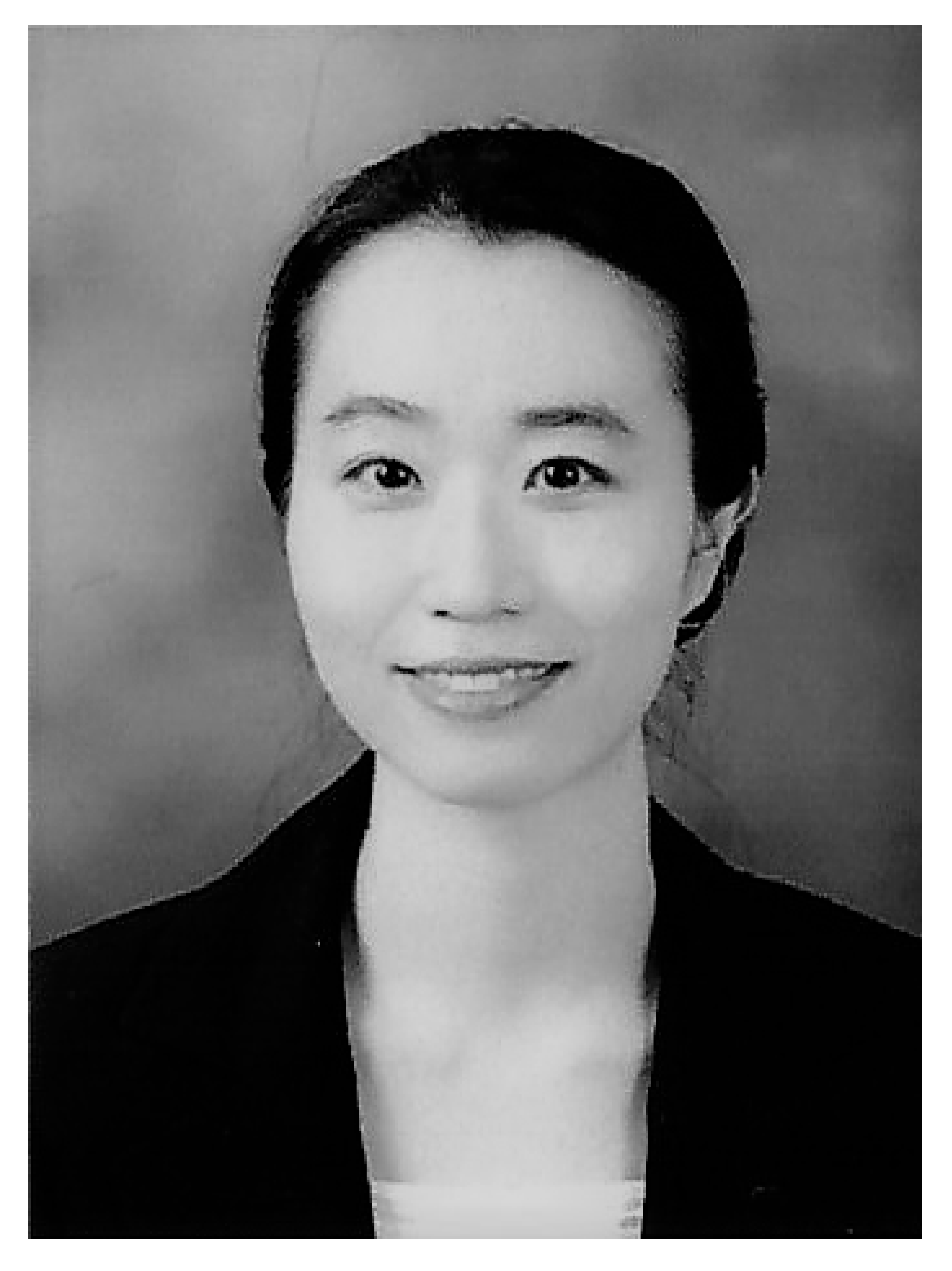 | Youna Jang received her master’s degree in electronics and computer engineering from Hanyang University, Seoul, Korea in 2014. She got her Ph.D. in Electrical Communication System Engineering from Soonchunhyang University, Choongnam, Korea in 2019. She participated as a Designer of Duplexer filter in an internship program in 2015 at Qorvo, Bundang, South Korea. She was a lecturer at Soonchunhyang University from 2016 to 2020. She is currently a research professor of Radio and Mechatronics Research Center. Her research areas include the design of passive components in microwave band. |
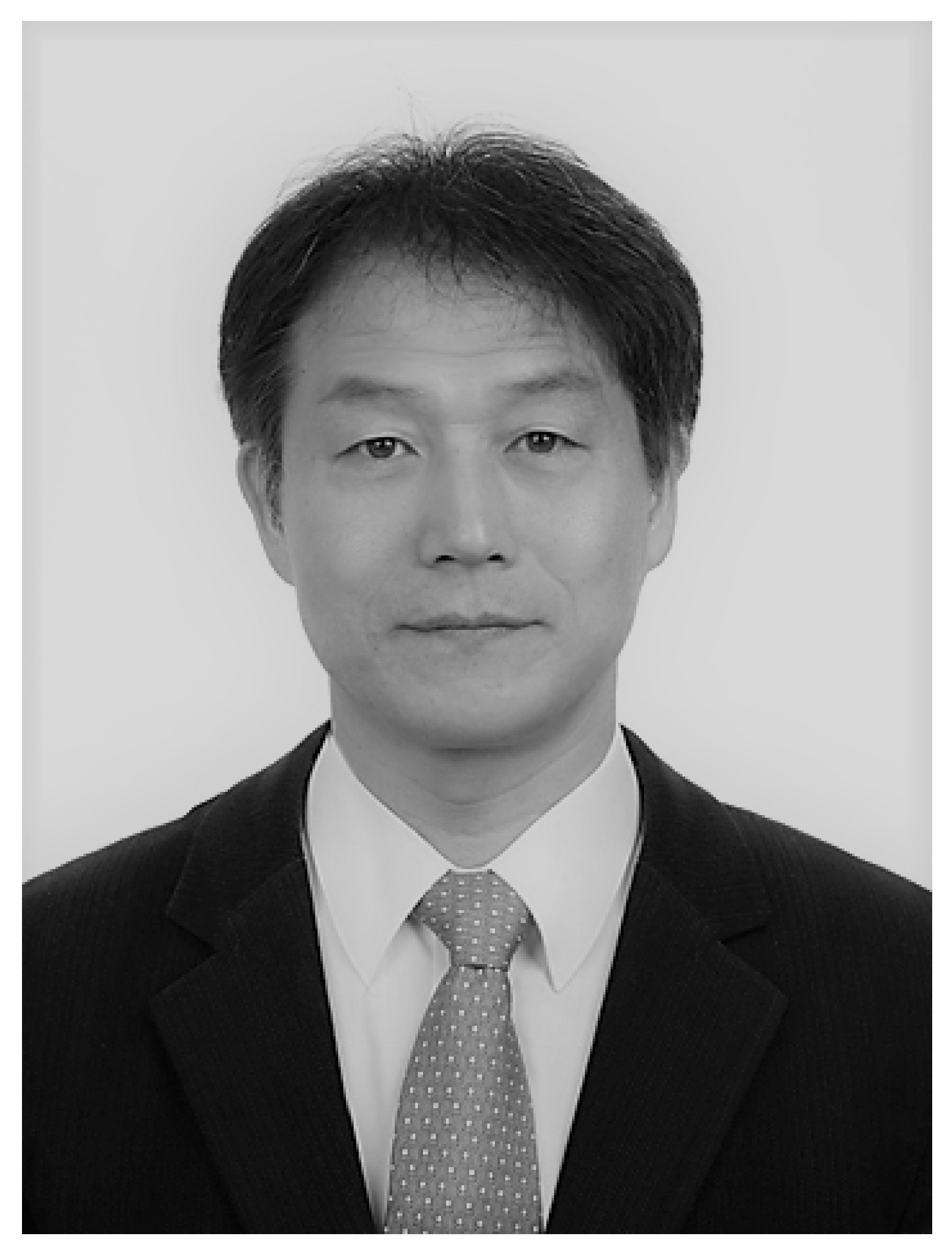 | Jongsik Lim received the B.S. and M.S. degrees in Electronic Engineering from Sogang University in Seoul, Republic of Korea in 1991 and 1993, and Ph.D. degree in the School of Electrical Engineering and Computer Science from Seoul National University in 2003. In 1993, he joined Electronics and Telecommunications Research Institute (ETRI) and worked in the Satellite Communications Division as a senior member of research staff. From March to July in 2003, he worked in Division of Information Technology, Brain Korea 21 Project in Seoul National University as a post doctoral fellow. He has experiences as a patent examiner in the Korean Intellectual Property Office (KIPO) through July 2003 to September 2004. Since March 2005, he has been with the Department of Electrical Engineering, Soonchunhyang University in Asan, Chungnam, Korea, as a professor. His current research interests include design of the passive and active circuits for RF/microwave and millimeter-wave with MIC/MMIC technology, modeling of active device, design of high-power amplifiers for mobile communications, applications of periodic structure to the RF/microwave circuits and modeling of passive structure having periodic structures. Prof. Lim is a senior member of IEEE, and member of IEICE (the Institute of Electronics, Information and Communication Engineers, Japan) and KIEES (Korea Institute of Electromagnetic Engineering and Science). |
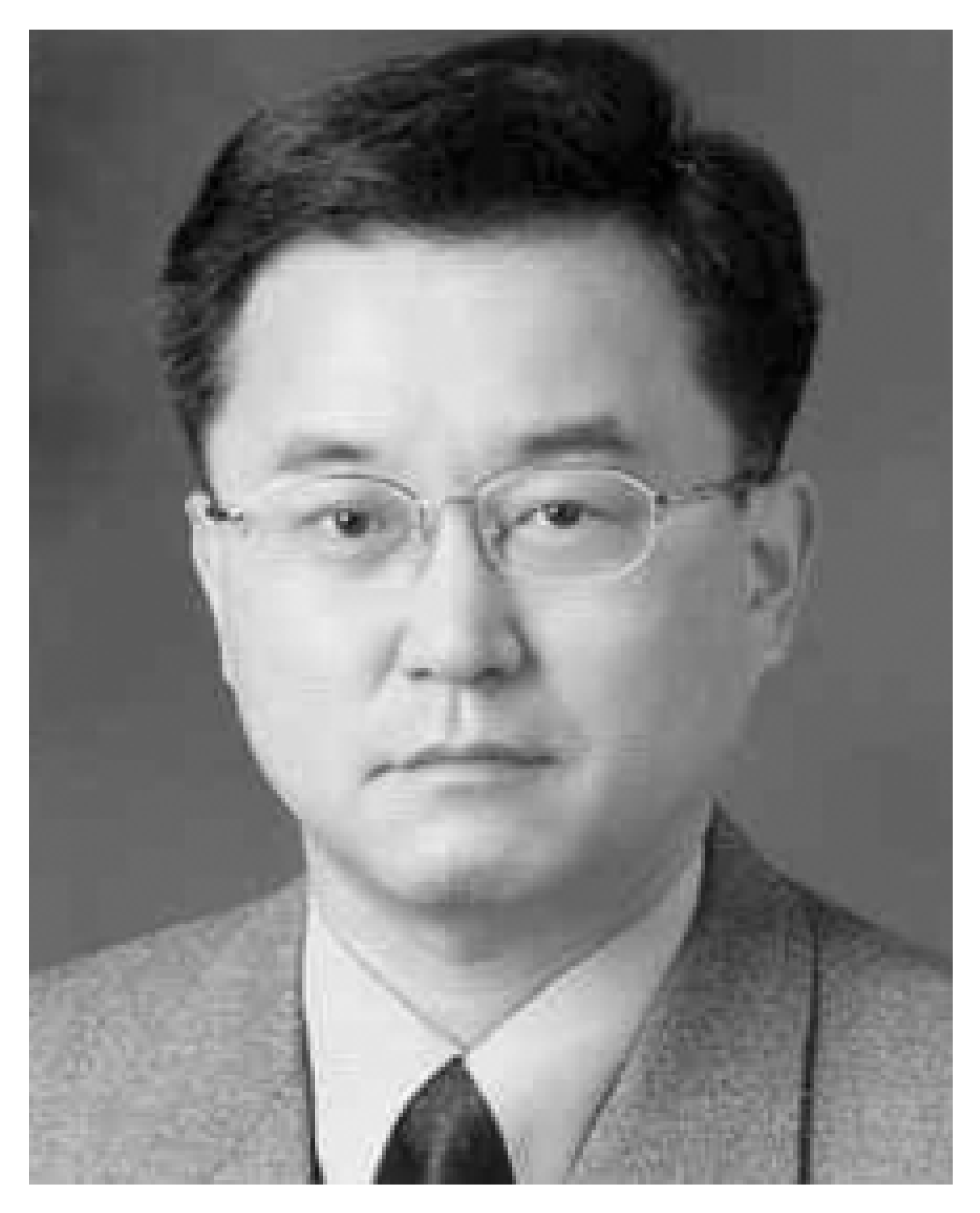 | Dal Ahn received the B.S., M.S., and Ph.D. degrees from Sogang University, Seoul, Korea, in 1984, 1986, and 1990, respectively, all in electronics. From 1990 to 1992, he was with the Mobile Communications Division, Electronics and Telecommunications Research Institute (ETRI), Daejeon, Korea. Since 1992, he has been with the School of Electrical and Electronic Engineering, Soonchunhyang University, Asan, Chungnam, Korea, where he is currently a Professor. He is also currently Chief of the RF and Microwave Component Research Center (RAMREC), Soonchunhyang University. He is also a Technical Consultant for Tel Wave Inc., Suwon, Korea. His current research interests include the design and application of passive and active components at radio and microwave frequencies, design of the RF front-end module for various handset system using low-temperature co-fired ceramic (LTCC) technology, DGS circuit applications, and circuit modeling using a commercial EM analysis program. He is an Editor of the Journal of Korea Electromagnetic Engineering Society. Prof. Ahn is a senior member of the Korea Electromagnetic Engineering Society (KEES). |
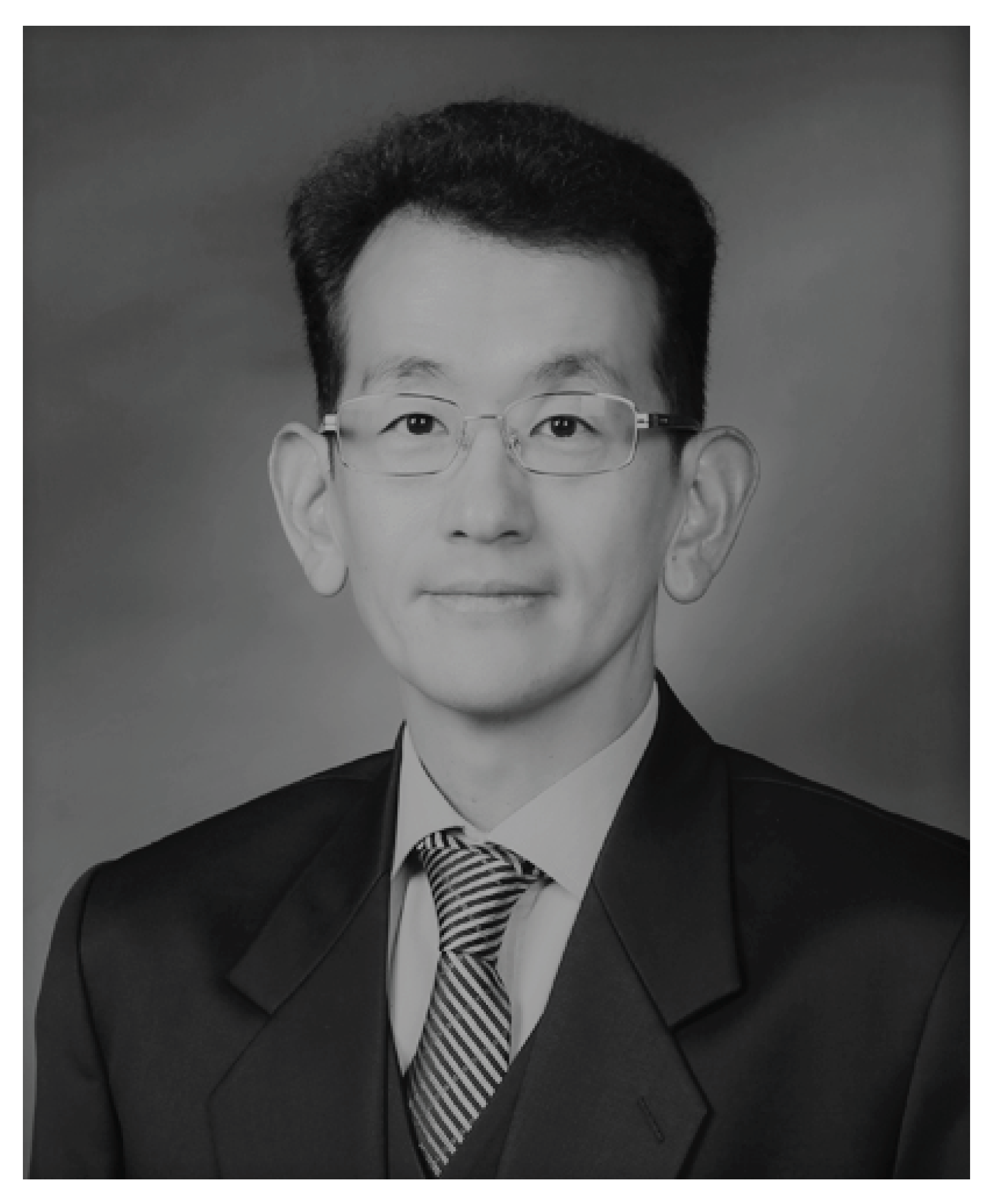 | Sang-Min Han received the B.S., M.S., and Ph.D. degrees in radio sciences and engineering from Korea University, Seoul, Korea, in 1996, 1998, and 2003, respectively. From 1999 to 2001, he was a Lecturer with the School of Electrical Engineering, Korea University. From 2003 to 2004, he was a Post–Doctoral Research Fellow with the University of California at Los Angeles (UCLA), U.S. From 2005 to 2007, he was a Senior Research Engineer with the Samsung Advanced Institute of Technology (SAIT), Korea. In 2007, he joined Soonchunhyang University, Korea where he is a Professor with the Department of Information and Communication Engineering. He was a Visiting Research Faculty with Georgia Institute of Technology (GT), Atlanta, U.S. from 2013 to 2014. Prof. Han is an Associate Editor of the Journal of the Korean Institute of Information Technology (JKIIT) and an Editorial Board Member of the Journal of Electromagnetic Engineering and Science (JEES). He appears in Marquis’ Who’s Who in Science and Engineering (2006–2007) and Marquis’ Who’s Who in Asia (2007). His research interests include RF/microwave system architectures with low-power/spectrum sensing, active integrated antennas, and reconfigurable RF systems/components. |
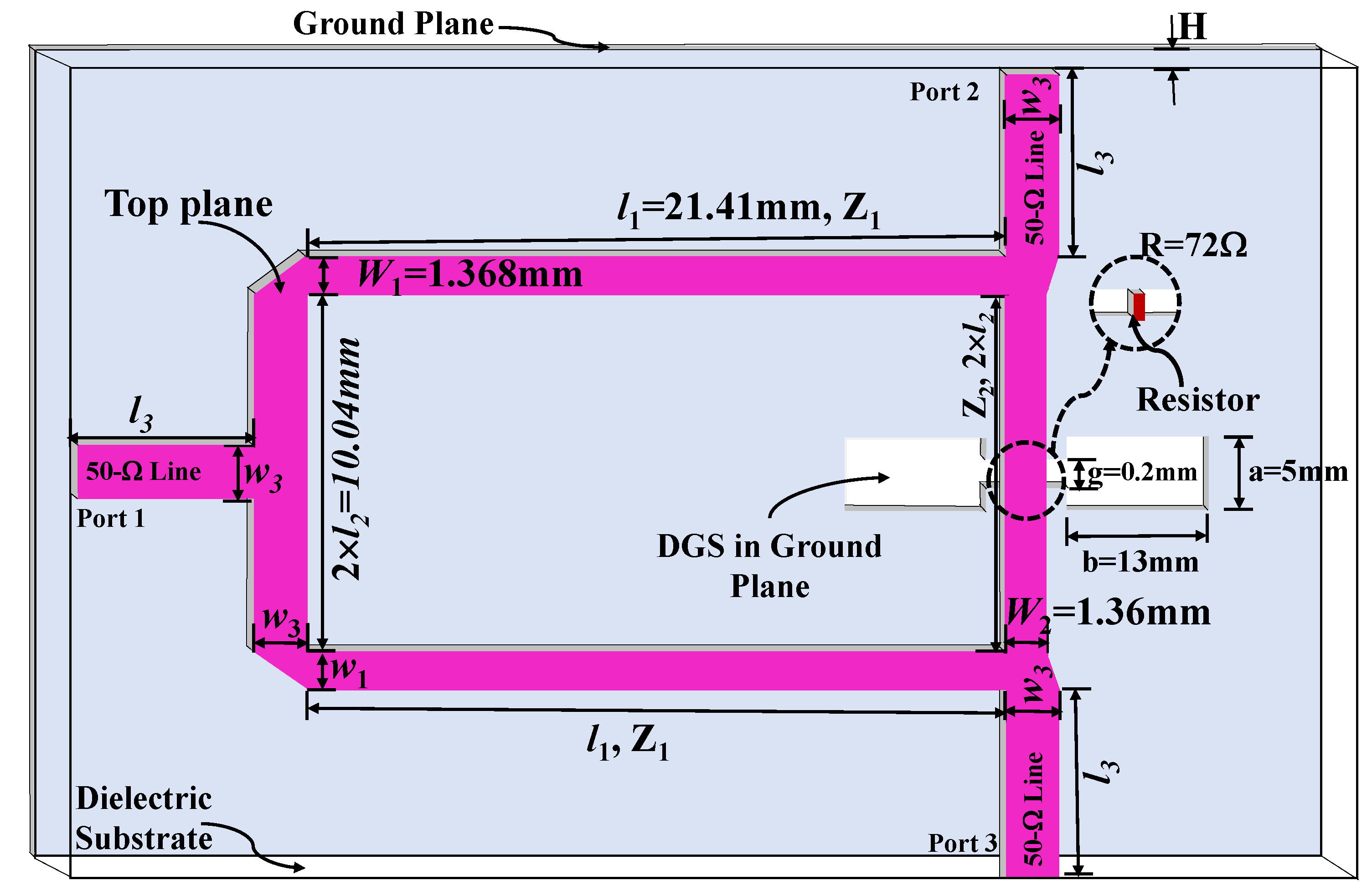
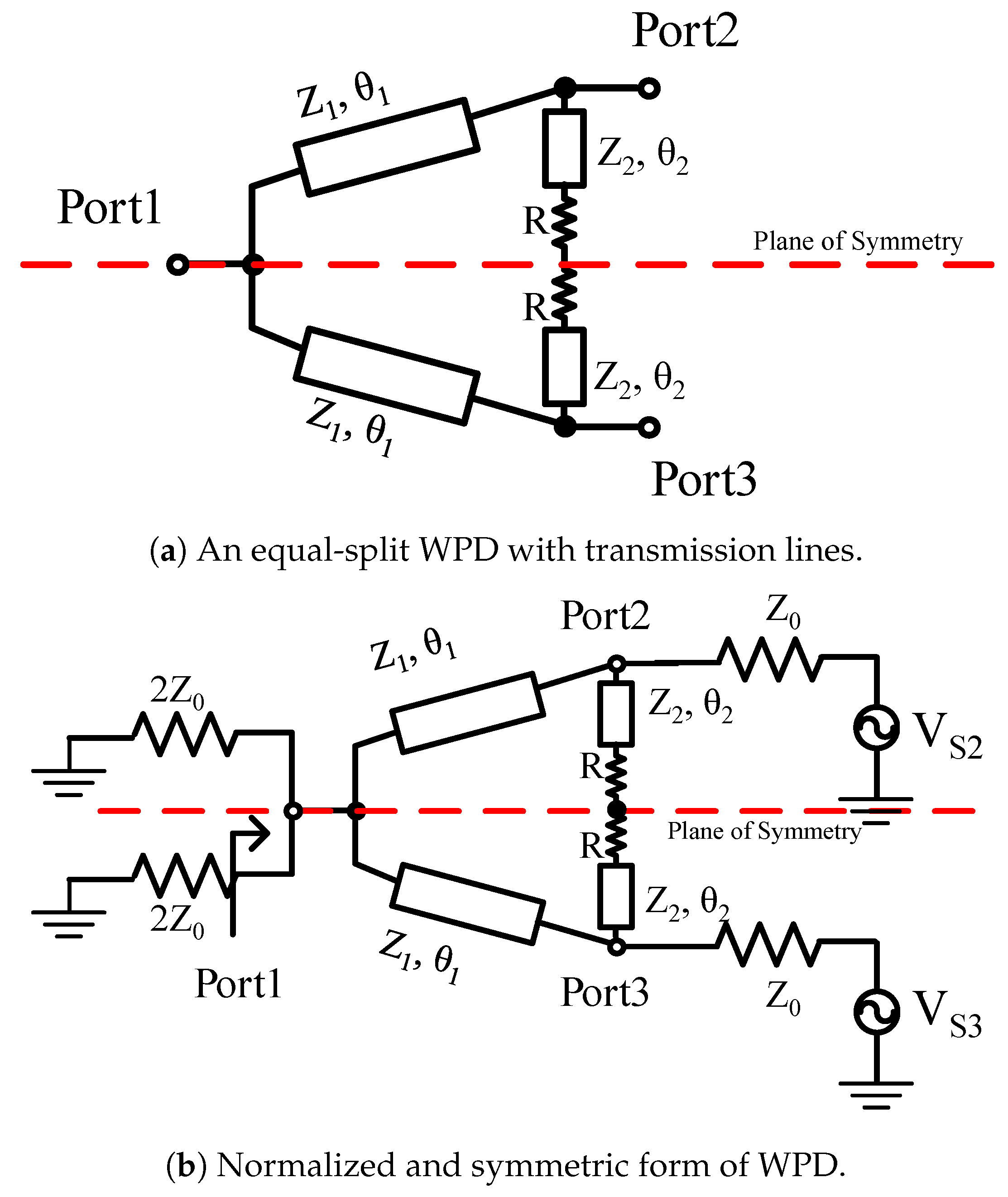
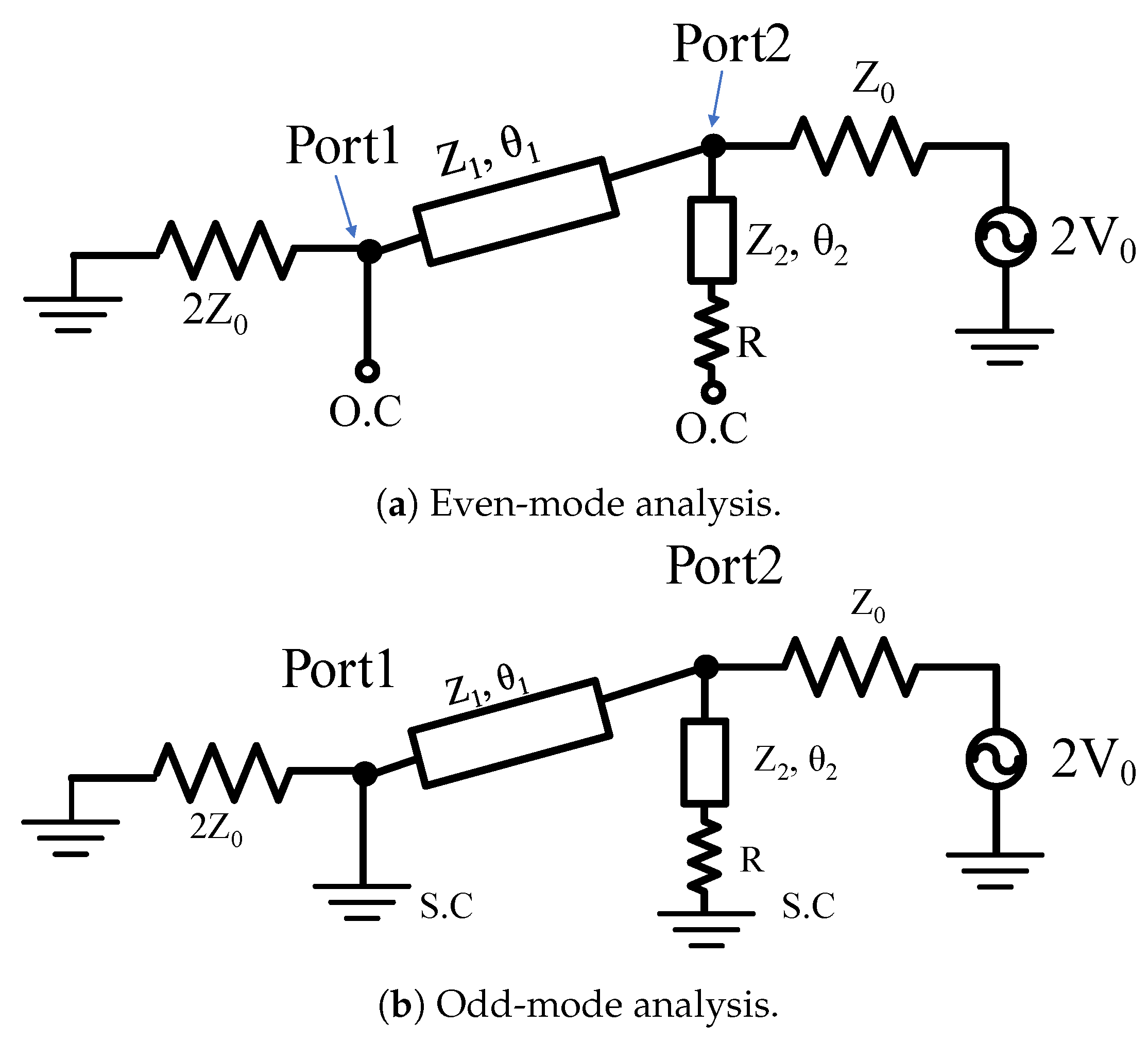


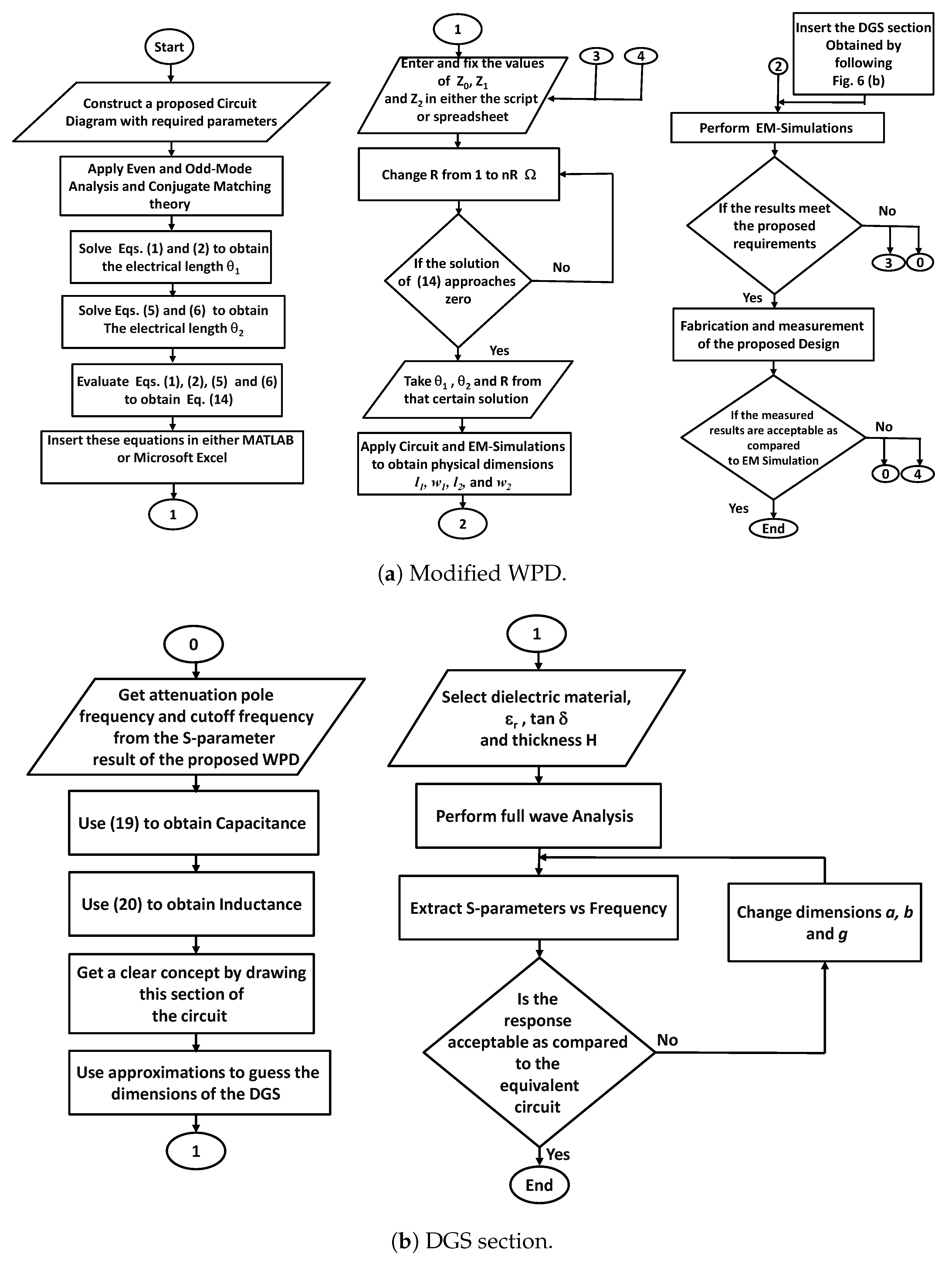

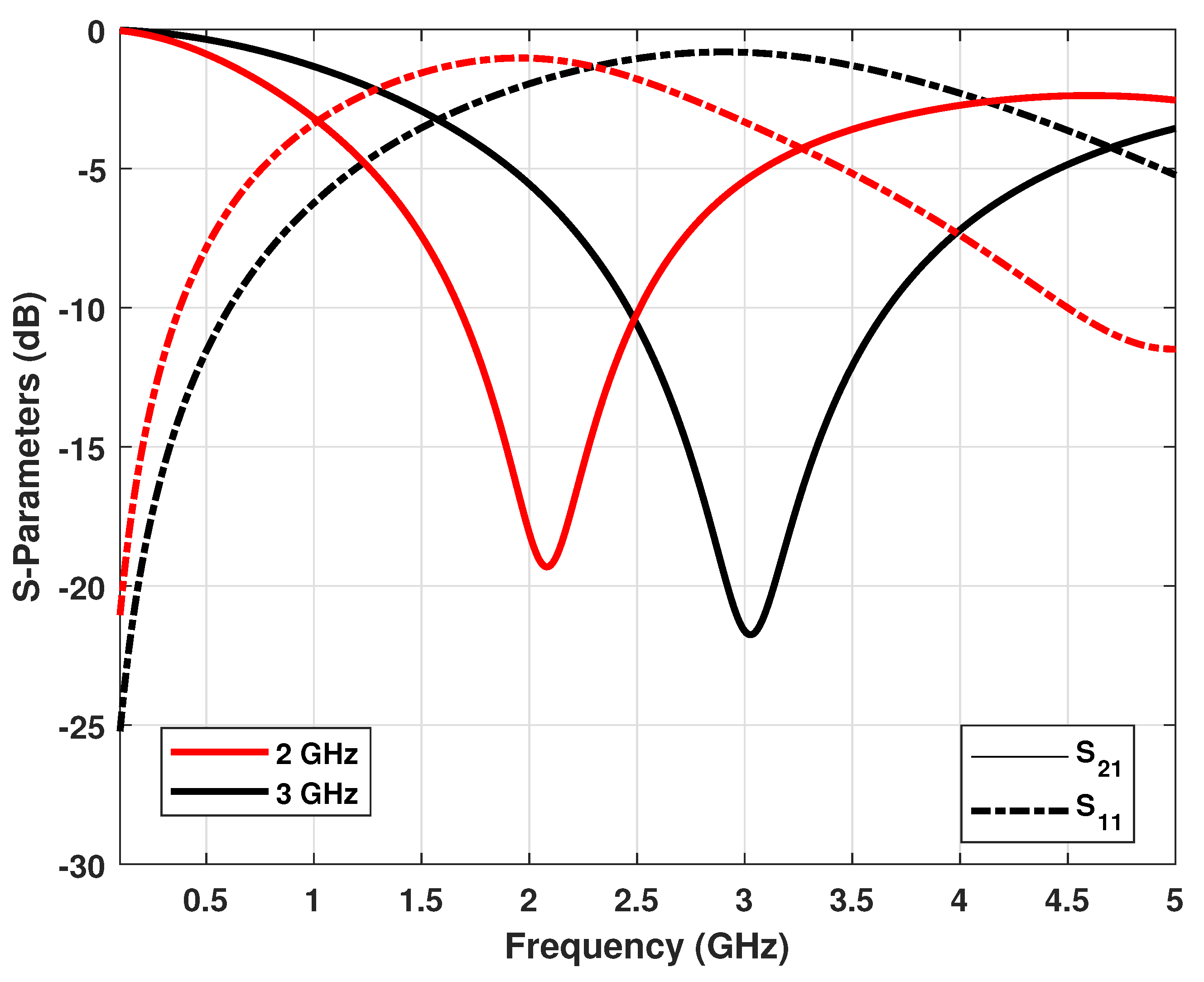


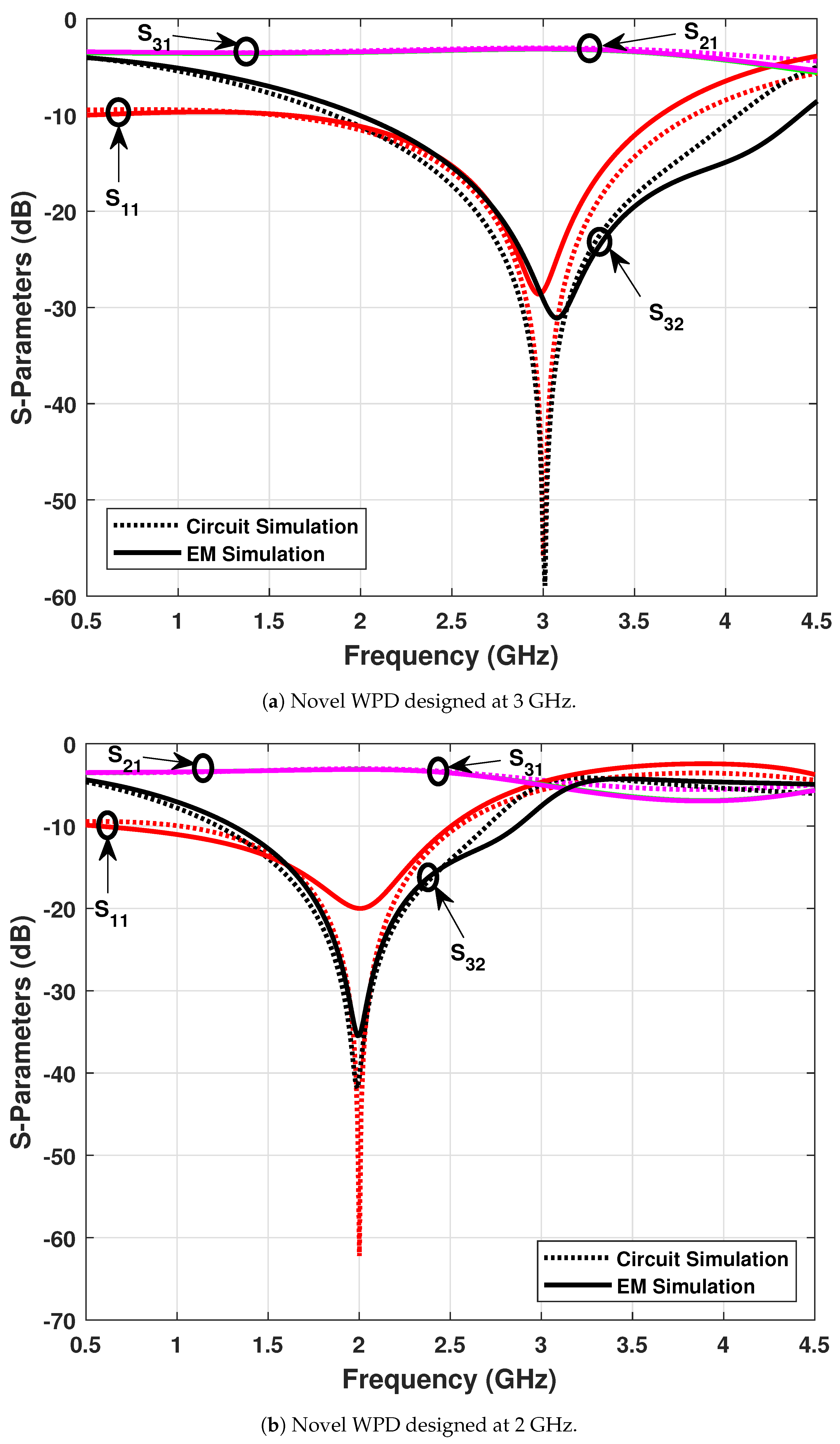
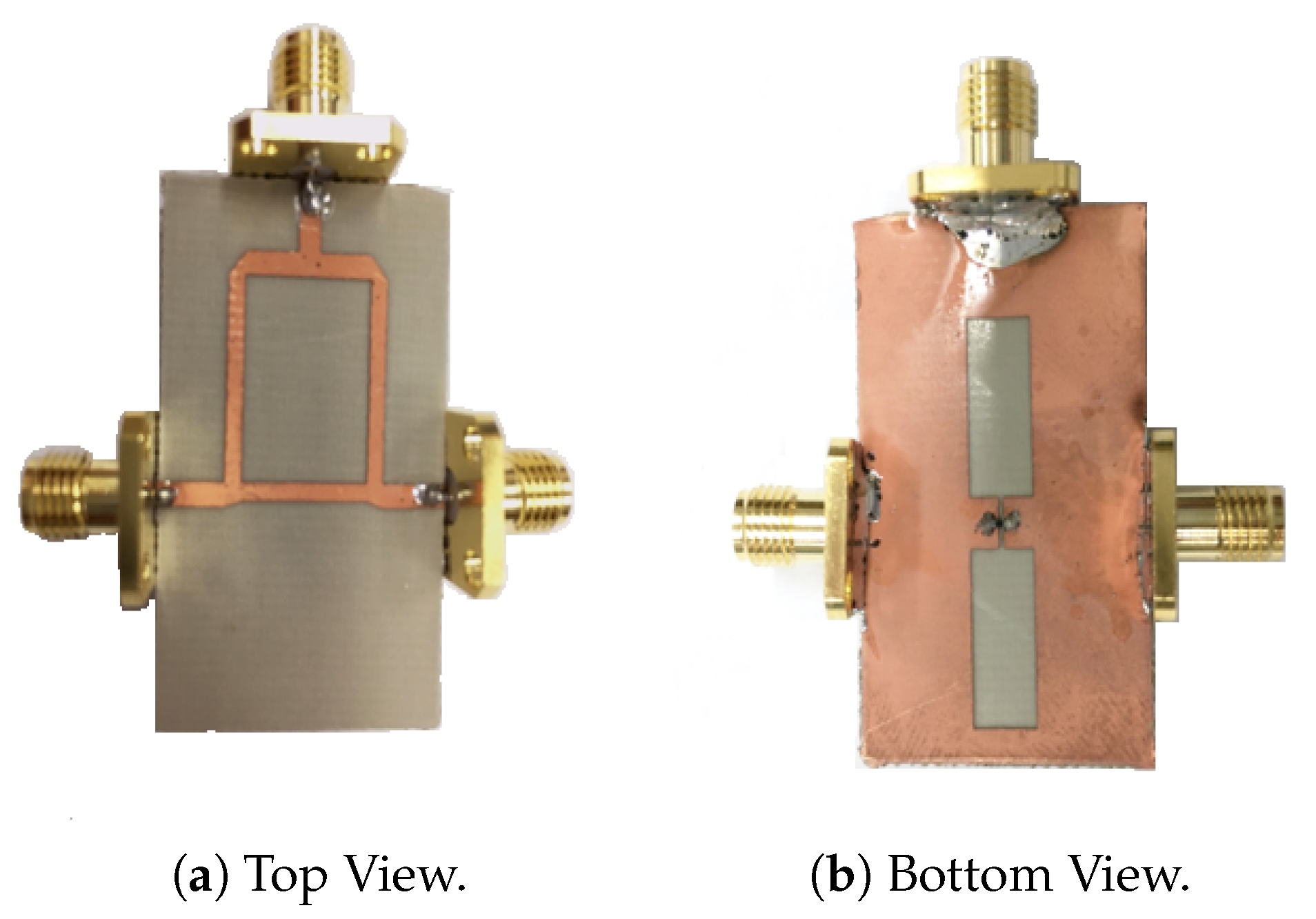
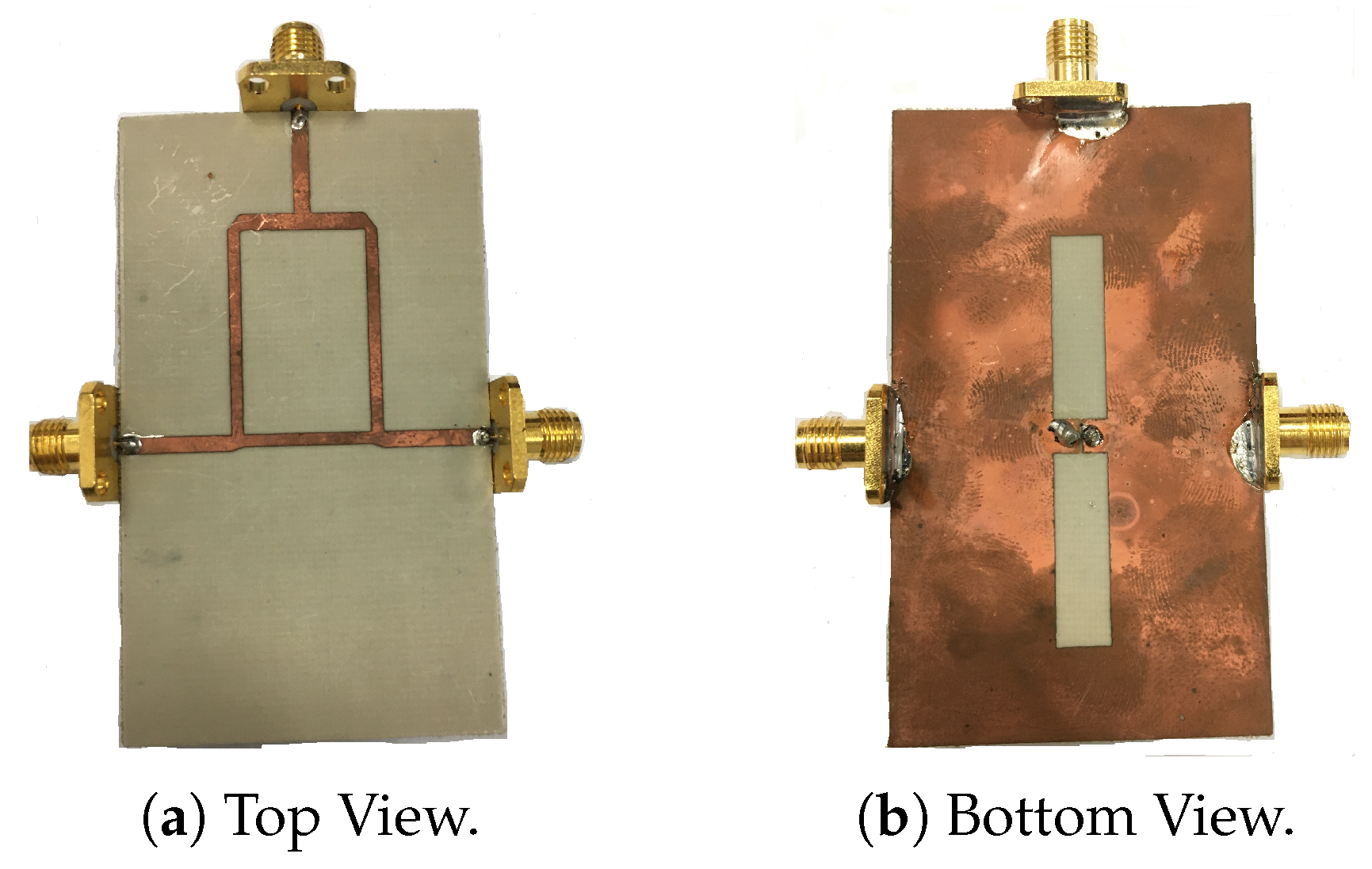
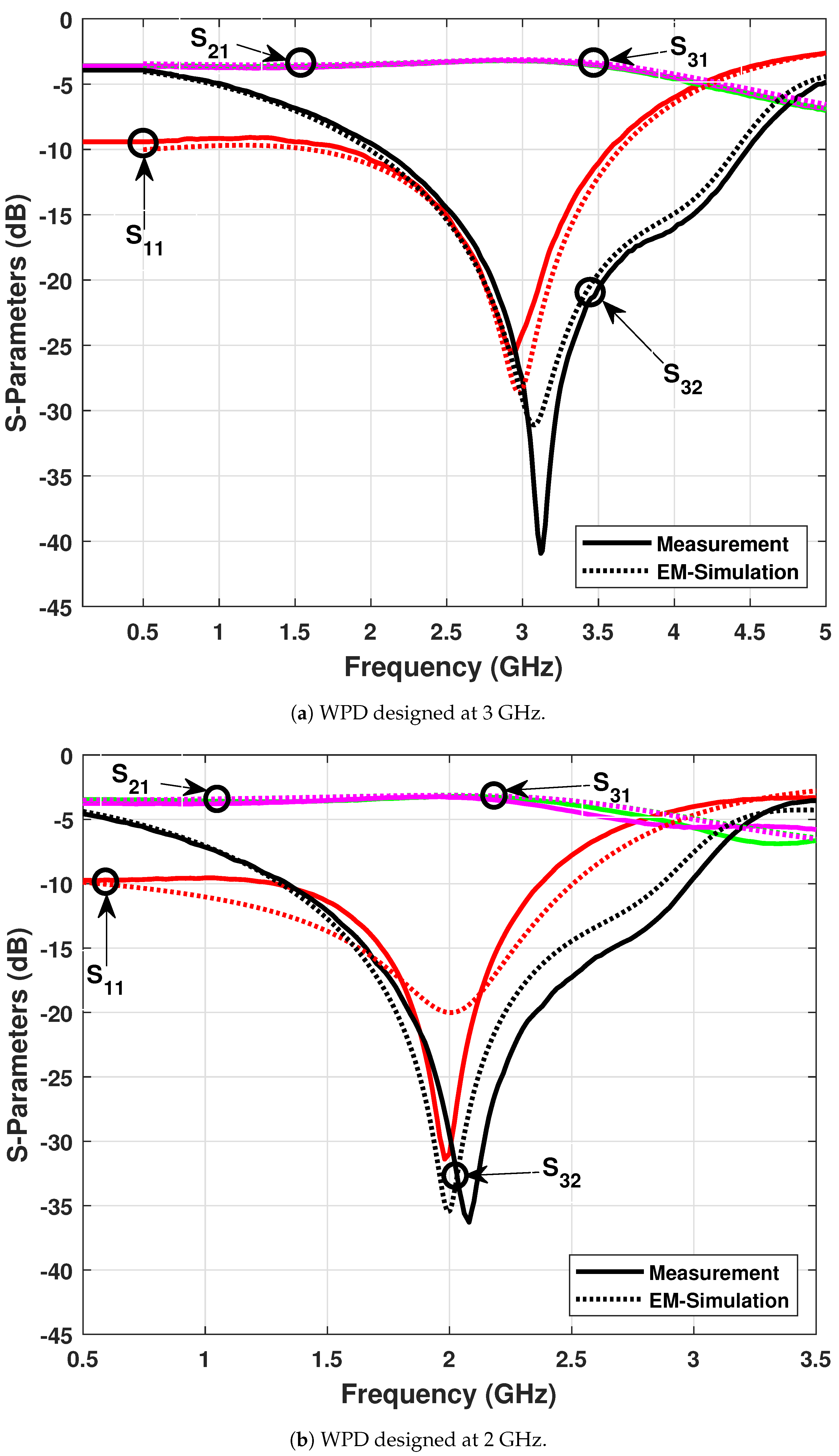
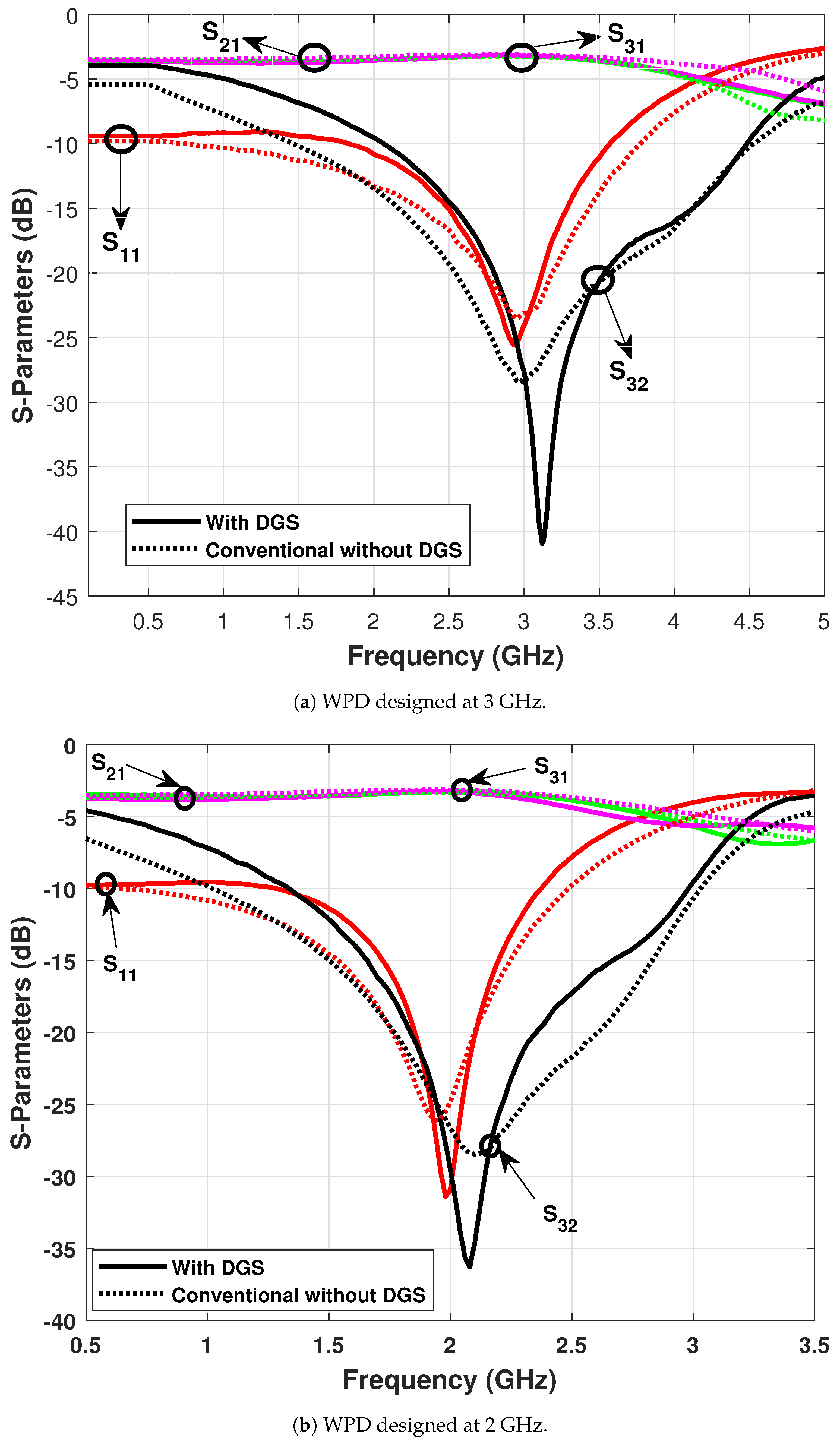
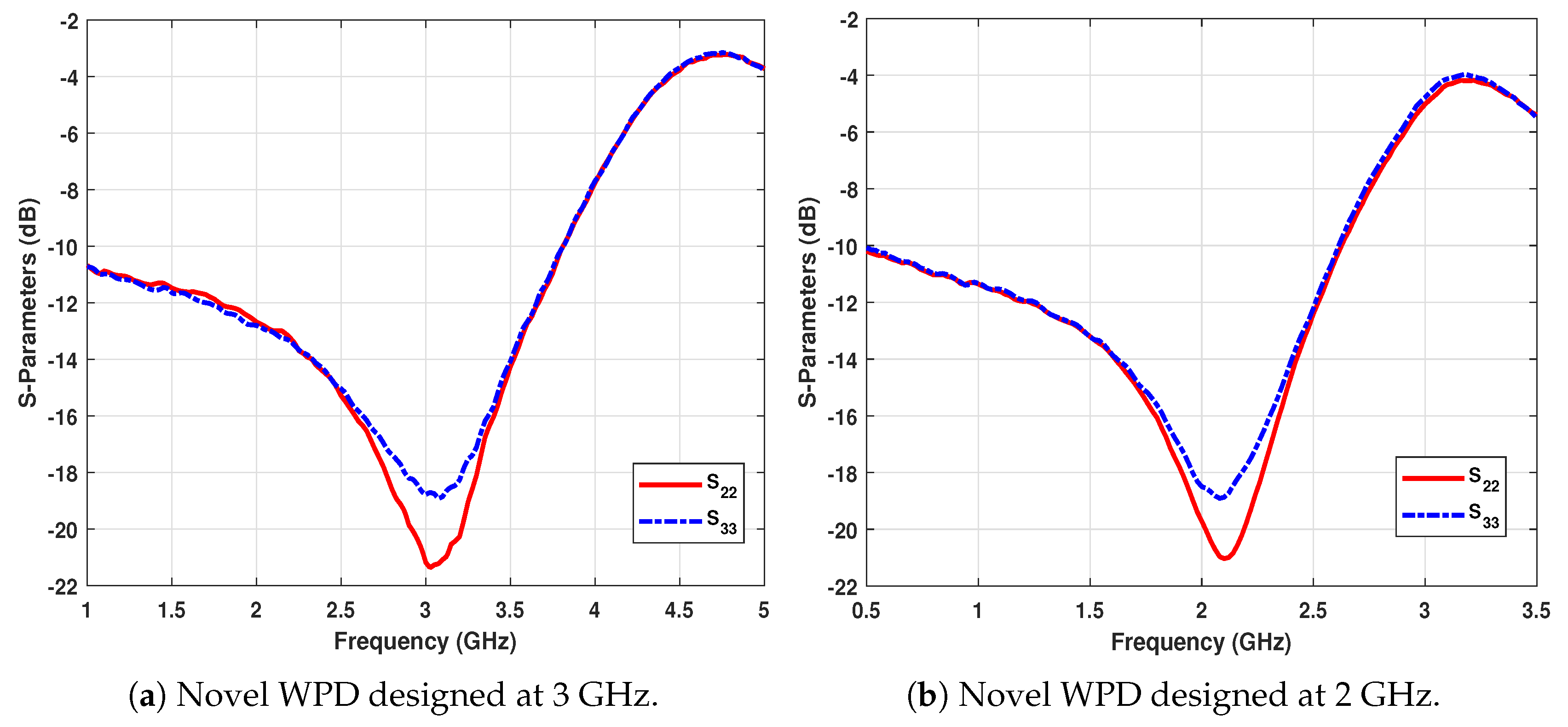
| Substrate | H (mm) | (dB) | (dB) | Bandwidth (GHz) | |
|---|---|---|---|---|---|
| Rogers RO3006 | 6.15 | 1 | −43.55 | −46.36 | 0.56 |
| FR4 | 4.4 | 1 | −38.98 | −38.21 | 0.57 |
| Taconic | 2.97 | 0.76 | −55.02 | −55.84 | 0.56 |
| Parameter | Impedance Z (Ω) | Electrical Length () | Physical Width (mm) | Physical Length (mm) |
|---|---|---|---|---|
| TL1:3GHz | = 60 | = 117.88 | 1.368 | 21.41 |
| TL2:3GHz | = 60 | = 27.88 | 1.368 | 5.065 |
| TL1:2GHz | = 60 | = 117.88 | 1.368 | 32.16 |
| TL2:2GHz | = 60 | = 27.88 | 1.368 | 7.606 |
| 50 Line | = 50 | - | 1.8707 | 13.699 |
| Operating Frequency | C (pF) | L (nH) | a (mm) | b (mm) | g (mm) |
|---|---|---|---|---|---|
| 3 GHz | 0.267 | 10.54 | 5 | 13 | 0.2 |
| 2 GHz | 0.3789 | 16.71 | 6 | 21 | 0.2 |
| Operating Frequency (GHz) | Return Loss (dB) | Isolation (dB) | Coupling dB | Coupling dB | |
|---|---|---|---|---|---|
| 3 | Simulated | −28.18 | −29.36 | −3.12 | −3.17 |
| Measured | −24.01 | −27.65 | −3.23 | −3.24 | |
| Error (±dB) | −4.17 | −1.71 | −0.11 | −0.07 | |
| 2 | Simulated | −20 | −35.42 | −3.13 | −3.13 |
| Measured | −30.95 | −29.53 | −3.24 | −3.30 | |
| Error (±dB) | 10.95 | −5.89 | −0.11 | −0.17 | |
| Operating Frequency (GHz) | Return Loss (dB) | Isolation (dB) | Coupling (dB) | Coupling (dB) | Occupied Effective Area (mm2) | Bandwidth (GHz) | |
|---|---|---|---|---|---|---|---|
| [15] | 1 | −27.9 | −30 | −3.34 | −3.31 | 0.27 | |
| [16] | 0.9 | > | −23 | ≈−3 | ≈−3 | 0.43 | |
| [17] | 2.43 | > | > | − | − | 0.1 | |
| [18] | 0.8 | > | − | − | 0.12 | ||
| [19] | 3.5 | −3.32 | −3.37 | 0.24 | |||
| [20] | 0.46 | > | −3.261 | −3.242 | 0.3 | ||
| [21] | 2.9 | −3.8 | −3.74 | 0.14 | |||
| C | 2 | −24.81 | −26.62 | −3.32 | −3.14 | 1.2 | |
| C | 3 | −27.66 | −25.37 | −2.91 | −2.90 | 1.8 | |
| * | 2 | −31.24 | −36.05 | −3.24 | −3.30 | 0.49 | |
| * | 3 | −25.54 | −40.83 | −3.23 | −3.24 | 0.65 |
Publisher’s Note: MDPI stays neutral with regard to jurisdictional claims in published maps and institutional affiliations. |
© 2021 by the authors. Licensee MDPI, Basel, Switzerland. This article is an open access article distributed under the terms and conditions of the Creative Commons Attribution (CC BY) license (https://creativecommons.org/licenses/by/4.0/).
Share and Cite
Salman, M.; Jang, Y.; Lim, J.; Ahn, D.; Han, S.-M. Novel Wilkinson Power Divider with an Isolation Resistor on a Defected Ground Structure with Improved Isolation. Appl. Sci. 2021, 11, 4148. https://doi.org/10.3390/app11094148
Salman M, Jang Y, Lim J, Ahn D, Han S-M. Novel Wilkinson Power Divider with an Isolation Resistor on a Defected Ground Structure with Improved Isolation. Applied Sciences. 2021; 11(9):4148. https://doi.org/10.3390/app11094148
Chicago/Turabian StyleSalman, Maaz, Youna Jang, Jongsik Lim, Dal Ahn, and Sang-Min Han. 2021. "Novel Wilkinson Power Divider with an Isolation Resistor on a Defected Ground Structure with Improved Isolation" Applied Sciences 11, no. 9: 4148. https://doi.org/10.3390/app11094148







